I’m not going to lie, I’m a big proponent of inbound marketing. I’ve seen it work firsthand with a lot of clients back in my marketing agency days. I also feel like it’s one of the most rewarding and easy-to-understand marketing philosophies around. Everything you learn while doing it applies to a whole lot more than one tactic or campaign; it works for your whole business. Inbound marketing is also cheaper than most outbound marketing activities, because with time (and if done right!) you’ll stop relying on paid services to gain leads.
To master inbound marketing as a managed service provider (MSP), you need to build a great website, understand your ideal customer profile, and most importantly, create the right content to get prospects to come to you. We’ll eventually cover those areas, but this article explains the concepts behind the inbound buyer’s journey, and how it can help you with that darned content you always hear about!
What’s the buyer’s journey, you ask? Good question! It’s not the same as a sales funnel. Just to make things easier (?), it’s also called the Marketing Funnel! Hubspot elegantly describes it as:
“The buyer’s journey is the process buyers go through to become aware of, consider and evaluate, and decide to purchase a new product or service.”
Sounds simple enough. However, we’re not used to dissecting how our clients make purchase decisions. So that’s where it gets tricky.
Now, before we dig deeper, I want to clear up a few things. First, let it be known that there are multiple frameworks for buyers’ journeys. Some have three steps, others up to eight or even 11 different stages. I like the three stages approach, because it’s simpler and still encompasses all of the longer ones I’ve seen around. For the sake of this article, we’ll use Hubspot’s Awareness-Consideration-Decision journey. Other tiered approaches essentially add steps to make analysis and execution more targeted, but it’s the same principle and will only over-complicate things for now.
Second, keeping with keeping things simple, I like to call the customer’s side of things the buyer’s journey (awareness-consideration-decision), and your marketing strategy’s side of it the marketing funnel (top of the funnel, middle of the funnel, bottom of the funnel), meaning that you build your funnel to lead their journey! It’s basically the same thing, and people use the words interchangeably, but because I’m specific, I prefer to add a slight difference based on ownership.
You = Marketing funnel
Potential Customer = Buyer’s journey
Moving on…
Why is the buyer’s journey important for MSP marketing?
Every MSP or IT business I’ve ever talked to has told me that referral, as in word of mouth, was their best tactic for getting new leads. Most of them also grew by only one or two clients a month, to no one’s surprise. Word of mouth (WoM) is slow and unpredictable. If you’re ready to unleash a vast array of leads upon your sales team—*cue lightning for effect, please*—you’ll need way more than word of mouth referrals.
Online marketing has evolved to bring the same type of leads in, but WoM has been replaced by search engines and fluid buyers’ journeys. If your growth is sustainable with those few WoM clients, then don’t sweat it! But if you’re hungry for more, stop doing the same thing over and over while expecting different results! An interesting fact about using inbound marketing to bring in leads is that you can also adapt your campaigns to bring more or fewer leads per stage of the buyer’s journey, making them more likely to buy. In other words, you can tailor your campaigns to which step of the funnel in which you need more lead, but more on that later.
A quick debunking of myths about online marketing
A lot of partners think their leads don’t see online ads, use Google as a channel to search for business solutions or spend time on social media. These are all biases, of course. According to CSO Insights, 70% of buyers fully define their needs on their own before engaging with a sales representative, and 44% identify specific solutions before reaching out to a seller. CMO Council says that nine out of 10 B2B buyers say online content has a moderate to major effect on purchasing decisions. No matter the type of persona—or potential client, if I try to avoid marketer lingo—your business is after, there’s no doubt they try to define their needs online before moving to a sales call. And that’s their buyer’s journey.
Lastly, the buyer’s journey serves as a canvas for your strategy. When I start to talk about inbound and/or content creation with MSPs, I’m often faced with a lot of questions about how to create, or prioritize, or interconnect that content together. “Ok, I wrote this eBook. Now what!?” Content strategy is important, and should definitely be tailored to the buyer’s journey. That’s WHY you create content.
OK, but what is the buyer’s journey, exactly?
Fair question. On average, when we plan to make a purchase, we don’t go willy-nilly into stores, whip out our wallet and buy the first thing we see. There’s a process to it. A situation arose where we needed to find a solution. That solution was vetted and analyzed, and we bought something.
We don’t realize it, but we do this every day. Even when we pick a can of soup, we’re:
- solving a problem: meal planning or hunger
- assessing the options: brand, flavor, type of soup, price per unit
- making a decision: the soup you choose to buy
That’s what we refer to as the Awareness Stage, the Consideration Stage and the Decision Stage of the buyer’s journey. The graphic below illustrates a sample buyer’s journey:
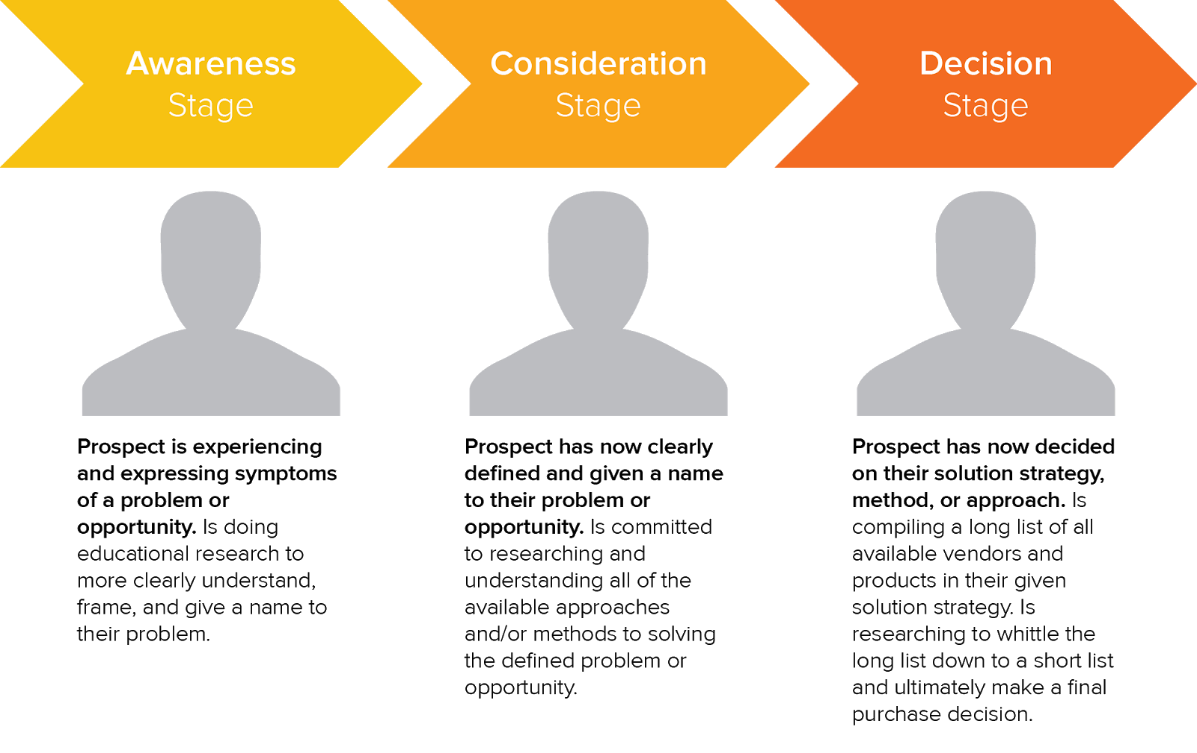
If you think of your online marketing as word of mouth 2.0, you can clearly establish a process to kickstart your content strategy:
- Define the type of prospect you’re going after
- Map out their specific buyer’s journey when planning to buy IT
- ???? (or rather create the content, and spread it)
- Profit!!!
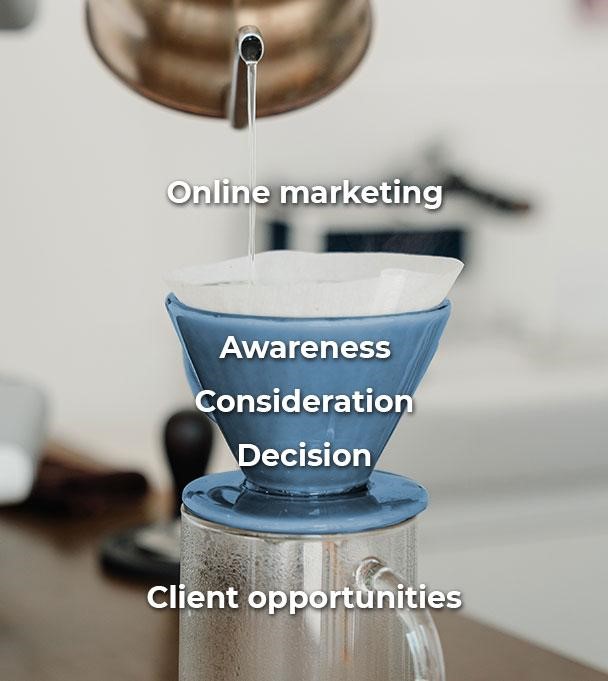
Another important note: it’s called a funnel for a reason! It works the same way as a home coffee maker:
- Pour your online marketing efforts into the funnel.
- The top of the funnel is where most of the water gathers, so you’ll get more leads at that stage than any other. It’ll need to marinate there a little bit so it gets more flavor.
- As the “water” goes down the funnel, there is less of it, but it gets tastier. Each step down the funnel is similar. Less leads, but more sales-ready ones. They’re getting closer to the end of the marketing journey.
- As they pass into your steaming cup of joe, they’re usually more ready to drink up your sales pitch.
What are the different stages of the buyer’s journey?
Well, now that you’re about a thousand words into a read that’s supposed to give you tactical and actionable advice, let’s get into the nitty-gritty of planning marketing campaigns tailored to the buyer’s journey, shall we?
Awareness Stage/Top of the funnel
Why?
The Awareness Stage is also referred to as top of the funnel, or even TotF, TOFU, or whatever else you’d like to call it yourself at this point. On the buyer’s side, this is where they try to uncover what their problem is. They’re unaware of who you are and they might not even know what exactly they’re trying to fix. They’ll look to educate themselves and conduct research on their perceived shortcomings. They will look for answers online, primarily by Googling their symptoms. Yikes.
Your side of the story
This stage is used by marketers to attract potential leads. This is where most of your content will reside; it should be tailored to specific keywords and be optimized for search engines. There are plenty of tools to help you isolate good keywords, such as Google keyword planner, Ahrefs’ keyword explorer, Answer the Public (you’ll never forget it, sorry!), Google Trends, SEMrush and more. At this stage, buyers will become more aware of their issues, and incidentally your offering, given they find your content. They are very far from making a purchase decision. If they convert into a known lead by downloading content, you’ll need to nurture them and show them more content to help them navigate to the Consideration Stage.
What?
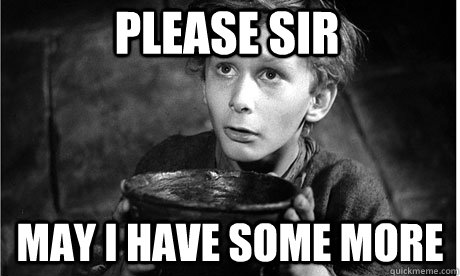 In the Awareness Stage, your content needs to be educational, easy to find, and light. You want potential leads to thank you for the info and congratulate themselves on finding such an educational website on their own. Don’t be salesy, don’t pitch your offering. Forget about your brand. At this stage, you want potential leads to trust you and come back. You want to solve their problem. You want them to ask for more.
In the Awareness Stage, your content needs to be educational, easy to find, and light. You want potential leads to thank you for the info and congratulate themselves on finding such an educational website on their own. Don’t be salesy, don’t pitch your offering. Forget about your brand. At this stage, you want potential leads to trust you and come back. You want to solve their problem. You want them to ask for more.
Balance free content and gated content to generate more leads here. Accessible content will be mostly blog articles or infographics. They’ll help you get that sought-after new traffic and engagement. Then, in those articles, add calls-to-action to gated assets that dig a little deeper. How-to guides, check lists and white papers should be your go-to. That content will be accessible via a form, acting as a gate. By downloading these assets, leads will be added to your database of potential clients. That’s how you fill your funnel!
Where?
All that beautiful content needs to be pushed out so that people can find you. The best way to see results with Awareness Stage content is to produce a whole lot of it, targeted to frequently-used or low-traffic keywords. That will make organic search your main channel through search engine optimizations (SEO). Think website pages and blog articles! Once you write and publish those, as mentioned previously, offer further content through calls-to-action and landing pages. Again, those should be optimized for search engines. Share those landing pages, web pages and blog articles through social media accounts, and you got yourself some social strategy without any added effort.
You can choose to advertise this content, but because leads aren’t ready to convert into clients yet and need plenty of nurturing, you should start by building those strategies first before advertising TOFU (yeah, I’m using it) content. A better ROI will be to keep your advertising budget for content that will impact your bottom line faster, such as middle-of-the-funnel campaigns, or demo requests.
Tip:
Steer clear from fear, uncertainty and doubt (FUD) tactics. They’re good for getting attention and scaring the bejesus out of leads, but they’re not great to build lasting relationships and thought leadership. If you know your stuff, you don’t need to scare or preach. Try to be genuinely helpful, without further motive.
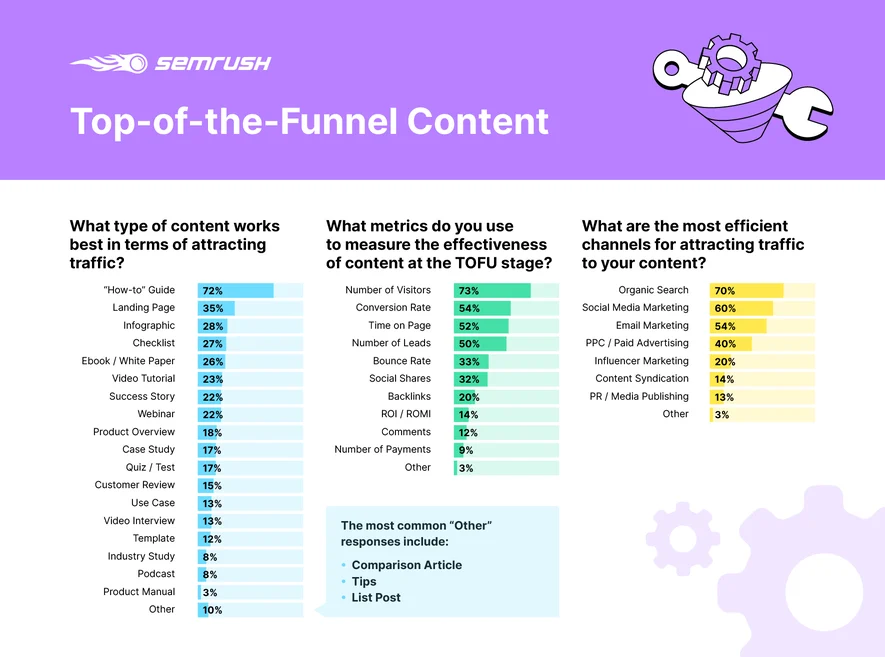
Consideration Stage/Middle of the funnel
Why?
Ah, yes. The MOFU stage. Or MotF, or Consideration Stage. I’m a child doing an adult’s job, so I will keep using TOFU, MOFU and BOFU because they’re ridiculous. Bear with me and my humor, please. I’m not immature, you’re immature!
Back on track—the MOFU stage is where relationships are made. Leads at this stage are fully aware of what’s wrong, and they’re starting to compare the possible ways of fixing or addressing their problems. They want expert advice and technical content. They’re looking for ways to fix the problem themselves or execute on their end. This is also the stage where they’re starting to compare providers, so be ready to bring your A-game. Helping these leads solve their problems shouldn’t scare you into believing they won’t need you. Quite the opposite! You can still give tools and templates to help them try to figure out the solution on their own. If they do, they’ll trust you as their savior, and if the day comes where they need further help, you’re at the top of their list of trusted experts. If they can’t fix it, it means they tried and subscribed to your solution, so trust is being established nonetheless.
Your side of the story
You want to get new leads that start at this stage, as well as nurture your TOFU leads down to MOFU (lol). This is where the funnel gets weird, because people can be added at any stage, rather than at the top only. Some leads will search Google for a more complex query that potentially stemmed from an Awareness Stage article they found somewhere else. It’s important for you to create and optimize content for this stage as well. If a lead finds you deeper down their buyer’s journey, all the more power to you! They’ll meet you where they’re closer to a buy. You’ll need keywords, empowering content and nurturing email copy. You can and should start dropping in your business name and sprinkling in a bit about your solutions. Stay neutral, avoid being pitchy, but mention you’re an expert—without being too cocky.
What?
Exactly what kind of content works best for the consideration stage, you ask? Wow, you’re a smart cookie! Theoretically, leads at this stage understand their problem, and want to research the potential solutions. You’ll find diving deeper into the options is a good strategy for converting and nurturing here. Product comparison sheets, expert deep-dive guides, case studies, webinars, FAQs, white papers and templates are all great examples of content that converts well. You should also use a form and a landing page for each and every piece of content at this stage. Because the content is more valuable, don’t give it out without your leads’ contact information. You took the time to help them figure out their options and are providing some time-saving, educational material. Because they’re already done with the awareness stuff, “paying” for some content with their email address shouldn’t be a problem. It’ll also ensure you fill your lead database with fresh, more mature leads.
Where?
As far as channels go, you’ll want to create blog articles that host the calls-to-action to the landing pages gating your MOFU content. The blog articles will be more technical than those you wrote or created in your TOFU strategy. Here, you can also leverage email marketing to send your content to all your Awareness Stage leads and nurture them further down your funnel. Another good channel is organic social media, once again. It would also be a good time to pull out your wallet and start some ads to make sure you have a wider audience seeing the asset.
Tip:
The top of the funnel serves as an appetizer to get you more eyeballs. With your middle of the funnel assets, you can use all the leads you got before and re-market or nurture them with your deep-dive Consideration Stage assets. You got them in the door, now is time to wow them.
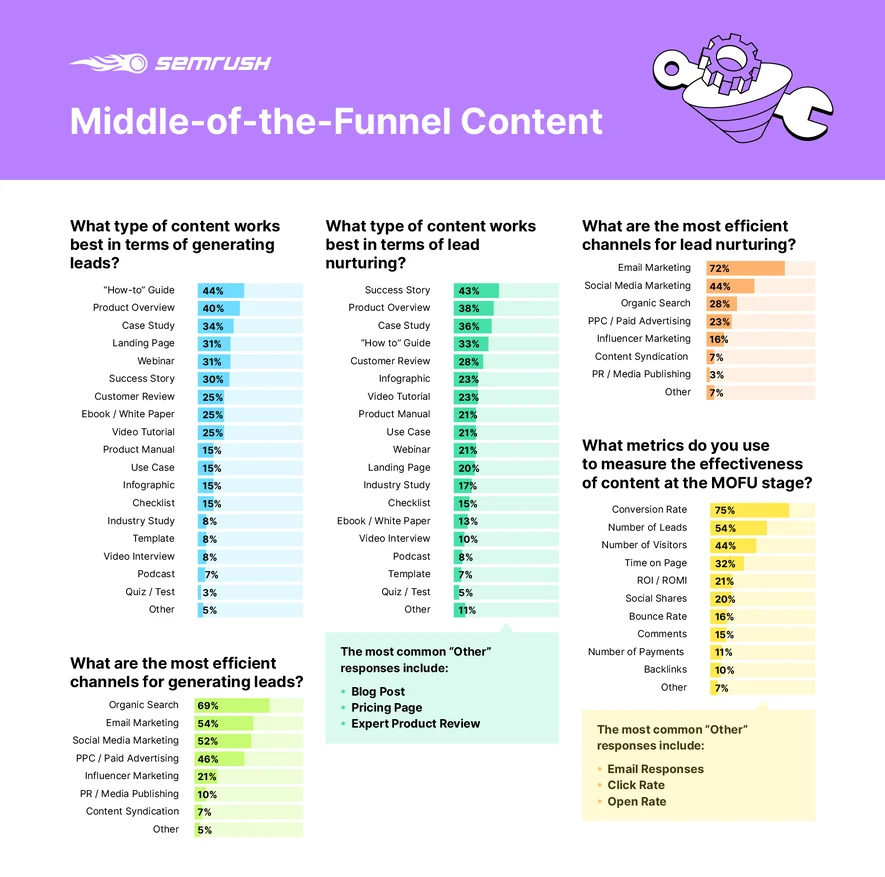
Decision Stage/Bottom of the Funnel
Why?
This is where your side of the story matches the buyer’s intention. They know know what’s wrong, researched solutions, isolated a few and are now looking to end their journey. On your end, you’re trying to book all those sweet sales-ready leads into calls and opportunities.
Being the last stage of your funnel, this is where you’ll have fewer leads that will either rapidly evolve into sales opportunities, or fade into exhausted leads that didn’t become clients. You can keep nurturing them, or ship them into another campaign that might present an offering that has more benefit to them.
What?
Now is your time to shine. No more messing around! Talk about your solution, your brand, your offering, what makes you different and what the benefits are of doing business with you. Again, don’t be pitchy, be helpful, but don’t shy away from trying to sell. Use your other clients to help convince potential buyers. Case studies, user reviews, use cases and success stories are all great Decision Stage content. Of course, don’t put those shiny reviews behind a conversion form—access needs to be free. The conversion you’ll get at the bottom of your funnel should be around product demos, consultations, meeting requests or anything that involves your sale team. Landing pages will help you with that.
Where?
The conversion landing pages, testimonials, reviews, case studies: they all need a home. The best place to host them at this stage is your website and with some email marketing. You attracted the potential leads through social and SEO channels, pulled them down your funnel through ads, re-marketing and social. You’ve nurtured them with emails between stages, and between consideration and decision, those email nurtures should present potential clients with content to kill their doubts.
You can advertise some content here, depending on what it is. If you choose to go the advertising way, promoting social posts or re-marketing known leads is your best bet.
Tip:
Here, it’s also good to think about customer enablement, pitch decks and tools. If you want to be more prepared and dig deeper than just presenting leads with sale pitch, create content to help you close. Good options can be video demos, a PowerPoint deck to go over your solutions, or small goodies to make sure leads remember you if they don’t sign up right away.
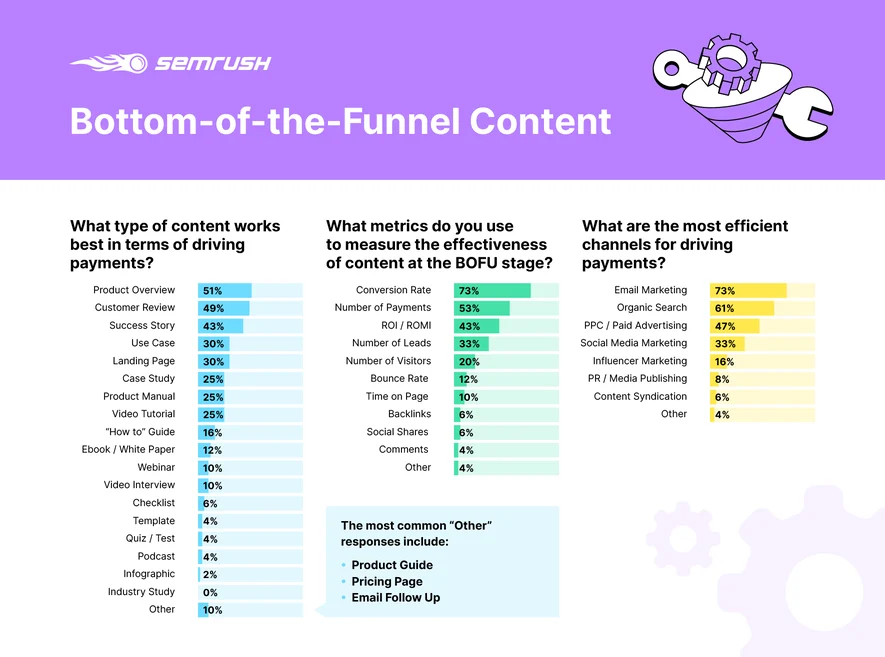
Map the journey
By taking the time to strategize, analyze and plan your content, you’ll make sure you start on the right foot. Too often I’ve seen MSPs jump into marketing without a plan, and fail. I’ve put together a template to help you get your thoughts organized, and plan your funnel better. Feel free to use it and leverage it. You’ll find a pre-filled tab to serve as an example, too.
It’s also important to understand that each persona, as well as each solution, has its own journey and funnel. Let’s say that you’re targeting three different verticals (legal, medical and financial, for example), and each vertical has two or three personas, you’ll need to map the content journey for each. That’s right! We marketers are doing more than just making pretty banners while sipping fair-trade macchiatos in our perfectly knitted beanies. We also PLAN, and boy is there a lot to plan! In my example, you’d end up with something like this:
| Vertical 1 – Legal | Vertical 2 – Medical | Vertical 3 – Financial | |||
| Compliance Ivan | Buyer’s journey 1 | HIPPA Hector | Buyer’s journey 1 | P.A. Patty | Buyer’s journey 1 |
| Internal IT Igor | Buyer’s journey 2 | Medical Receptionist Mary | Buyer’s journey 2 | Accountant Ahmed | Buyer’s journey 2 |
| Lawyer Lucy | Buyer’s journey 3 | Doctor David | Buyer’s journey 3 | Owner Owen | Buyer’s journey 3 |
And for each of those nine journeys, a filled buyer’s journey document with campaign ideas and potential assets to create. It quickly spirals out. Don’t over complicate your life, though. List your solutions, start with your cash cow, then pick the most relevant persona and focus solely on that one for now. The last thing you need to do is to spiral down into the marketing wormhole and get so overwhelmed that nothing moves forward. It’s all about small victories at a manageable pace!
Our Marketing Program is built around providing you with sequential marketing campaigns tailored to a typical buyer’s journey. In each campaign you’ll find a TOFU, MOFU and BOFU asset, as well as nurturing copies, scripts, social posts and banners to help and guide you along the way.
PS. If you want to keep learning, here’s a list of other articles and resources to further your knowledge on the subject:
- https://www.semrush.com/blog/content-marketing-funnel/
- https://blog.hubspot.com/insiders/inbound-marketing-funnel
- https://blog.hubspot.com/sales/what-is-the-buyers-journey
- https://ahrefs.com/blog/marketing-funnels/
- https://www.copper.com/blog/buyers-journey
- https://www.singlegrain.com/blog-posts/content-marketing/how-to-create-marketing-funnel
- https://neilpatel.com/blog/how-marketing-funnels-work/
- https://www.smartbugmedia.com/blog/the-3-stages-of-a-typical-buyers-journey
- https://www.impactbnd.com/blog/how-to-use-the-buyers-journey
- https://www.tributemedia.com/blog/the-buyers-journey-explained





